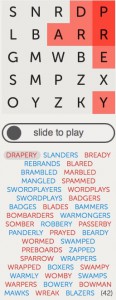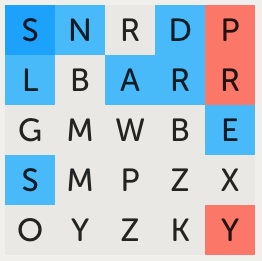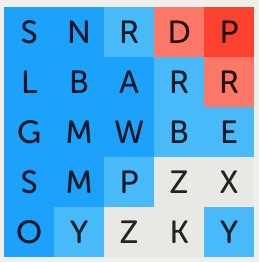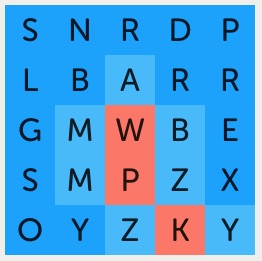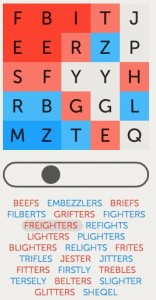Remember the videocassette recorder (VCR)? What a glorious piece of technology. For the first time in human history, people could record TV shows for later viewing (“time-shifting”). Freed from the shackles of when the networks offered programming, people could instead watch shows whenever it was convenient. Hooray!
The revolution moved on
And yet…about the only place you’ll find a VCR today is at electronics recycling sites. What happened? The revolution moved on. DVDs replaced cassettes.
While DVDs were a vast improvement in playback quality and convenience, they were almost never used for recording TV shows. For starters, DVD recorders were far more rare than the ubiquitous players. No matter. As it turned out, most people had never used their VCRs to record shows. It was just too complicated. Unless you planned to be home for the starting time of a show, you had to figure out how to record while you were away. A successful time-shift required that you (a) remember to insert a blank tape and rewind it if necessary (b) make sure the tape was sufficiently long to record your show, slowing the record speed as needed and (c) set the VCR to the desired television station or input setting.
Even after you overcame these hurdles, the Mt. Everest of hurdles remained: Figuring out how to program the device to start and stop at the correct time. The majority of people gave up at trying to get rid of the pesky blinking “12:00.” Even if you succeeded, you had to do it all again each time you wanted to record a show.
So most people wound up using their VCRs and DVD devices almost exclusively for playback of prerecorded material. And that’s where things stood until…
The revolution moved on…again
The digital video recorder (DVR) arrived! Suddenly, time-shifting was drop-dead simple. Want to record six different shows each on a separate station? No problem. You can even set up a season pass to record a series without needing to know exactly if or when episodes will air. And you can almost instantly select to playback any of your recordings. Fantastic!
There remain a couple of drawbacks to DVRs. For one thing, unlike with a VCR, you need to pay a monthly fee, typically to your cable company, in order to make use of the DVR. But, by now, this is a minor extension to what people are already doing. More troublesome, it’s almost impossible to make external copies of your recordings. This means that you can’t, for example, make a backup copy of a show or lend a recording to a friend—as you could easily do with videocassettes. And, should your DVR break and need to be replaced, hold on to your hat: you lose all your recorded content.
And that’s about where things stand now.
[Note: TiVos are better than most other DVRs in terms of offloading content. The latest Roamio TiVos can send recorded video to your iOS devices. And almost all TiVos can transfer shows to your computer, albeit it a painfully slow rate. Good, but still not an ideal solution.]
The revolution keeps on moving
The rumblings that signal the next major technological shift are already here: internet streaming and cloud-based video services such as iTunes, Netflix and HBO GO. Devices such as Apple TV and Roku are now serving as DVR alternatives in many households, despite the lack of any recording option. As these services and devices continue to improve, DVRs (as well as DVD and Blu-ray players) will eventually join VCRs in the dustbins of the not-too-distant future.
More substantial change is on the way. Here’s a glimpse of one possible future:
Imagine a cloud-based service that stores every movie and television show ever recorded/filmed/whatever (except perhaps movies currently in theaters and the most recent episodes of TV shows). Now imagine that you can access this immense library merely by paying a monthly fee. I expect the fee to be fairly steep by today’s standards, around $100/month. But it will be comparable to what most people are paying now for similar access (via a combination of payments to Netflix, Hulu, renting and buying movies, etc.).
As a subscriber, you will be able to stream any movie or TV show (without commercial interruptions) to any of your Internet-connected devices (TV, computer, tablet or smartphone).
You’ll also be able to watch content when you’re offline, for no additional fee. To do so, you’ll just download your desired items to your digital device. There will be some limitations here. As with current rented movies, the downloads will “expire” after a brief period of time, say a month. And there will be a limit to how many downloads you can have active at one time (perhaps a half dozen). Still, this should be more than adequate to cover your viewing for those occasions when you don’t have an Internet connection.
What about those movies you have to “own”—perhaps because you’re worried they might get removed from the cloud service someday? Once again, not a problem. There will be an option to purchase content, just as you can now do from the iTunes Store. However, because you’re also paying a monthly fee, I expect the purchase price to be cheaper than the current going rates.
There you have it: one service for just about anything you might want to watch (except for live sports and news shows), available just about anywhere and anytime you want to watch it. And no need to remember to record anything. Nirvana.
Roadblocks
The essential technology to implement this system exists today. In fact, for music, via services such as Spotify or Rdio, you can already pretty much accomplish what I’ve described here. Offering the same capability for video is not as simple. It will almost certainly require upgrades to the current Internet bandwidth. But that’s coming. I don’t consider this a dealbreaker.
The bigger question mark is whether the existing content creators and providers (Comcast, TV networks, Hollywood studios, etc.) will ever willingly go along with such a system. At present, given their track record, I’d have to say no. They will certainly put up a fight — a big fight — similar to what they are now doing with Aereo. But they do this with every outside challenge to the status quo, dating as far back as when Hollywood railed against television as a dire threat to its survival.
[Note: Aereo, although much more limited in scope than what I have proposed here, offers a feature not included in my proposal: it can function as a cloud-based DVR for live broadcasts. If this too became widespread, it would be another nail in the coffin for the traditional DVR.]
Still, I remain optimistic that, when a strongly desirable technological advance becomes practical, as is the case here, it cannot be blocked indefinitely. As the forces of change gather steam, the opposing parties will reluctantly make the necessary concessions while at the same time figuring out a way to continue to make money. Yes, there will be some losers as well as winners. But that’s how progress happens.
Something of this sort may well be what Apple has been trying to cobble together with its yet unannounced but long-rumored venture into television. If so, it would explain why they are having such a difficult time bringing it to market. Getting all the relevant parties on board is a balancing act that even Steve Jobs might have been unable to pull off. Regardless, I expect we’ll see the fruits of Apple’s labors sometime within the next year.
The other possibility is that Apple fumbles the ball and someone else (such as Comcast) picks it up and runs with it. I hope not. The result probably won’t be nearly as good for consumers as what Apple would have done.
Whoever succeeds and however they do it, one thing is certain: Change is coming and, when it arrives, it will be curtains for the DVR.

